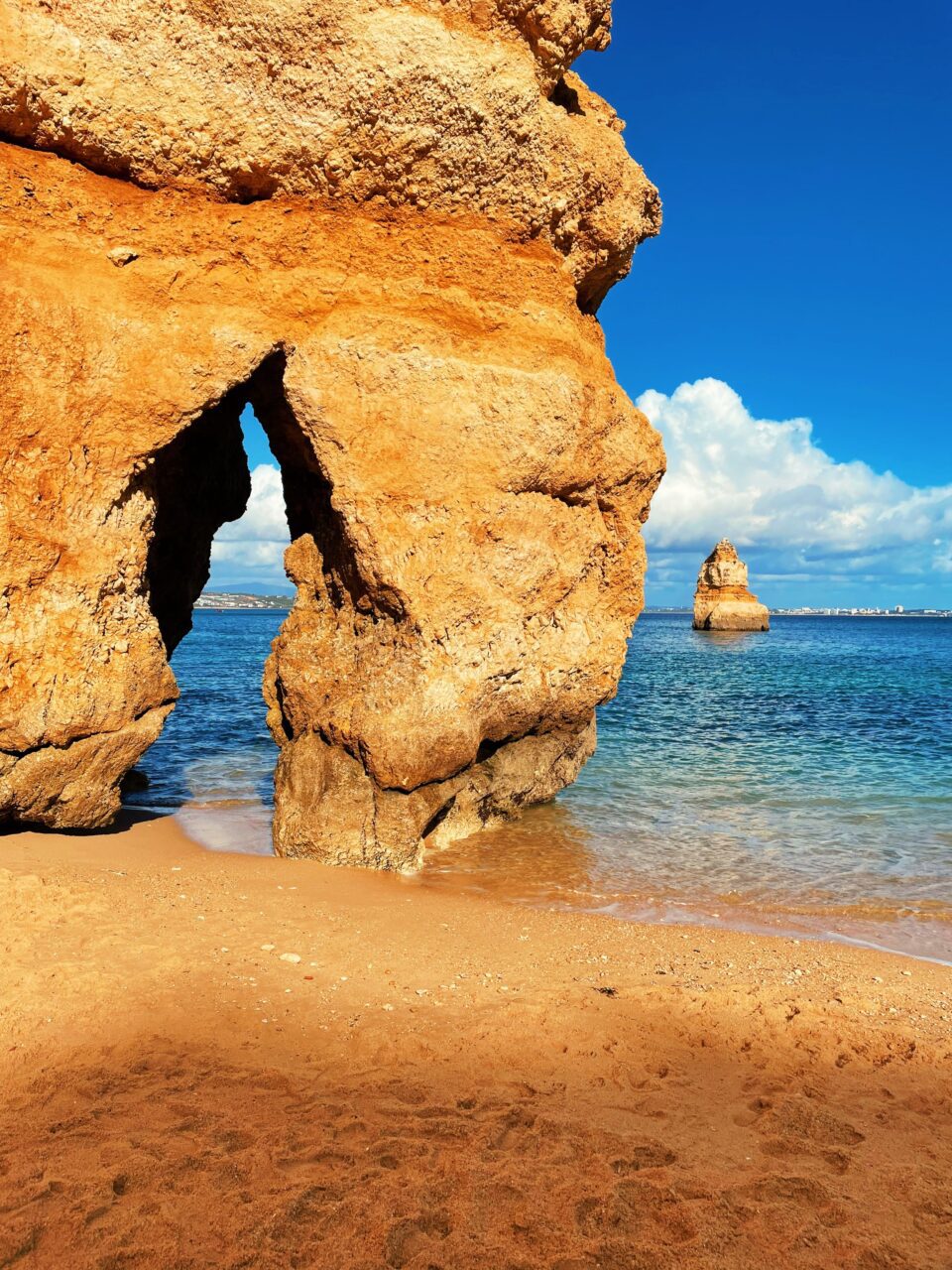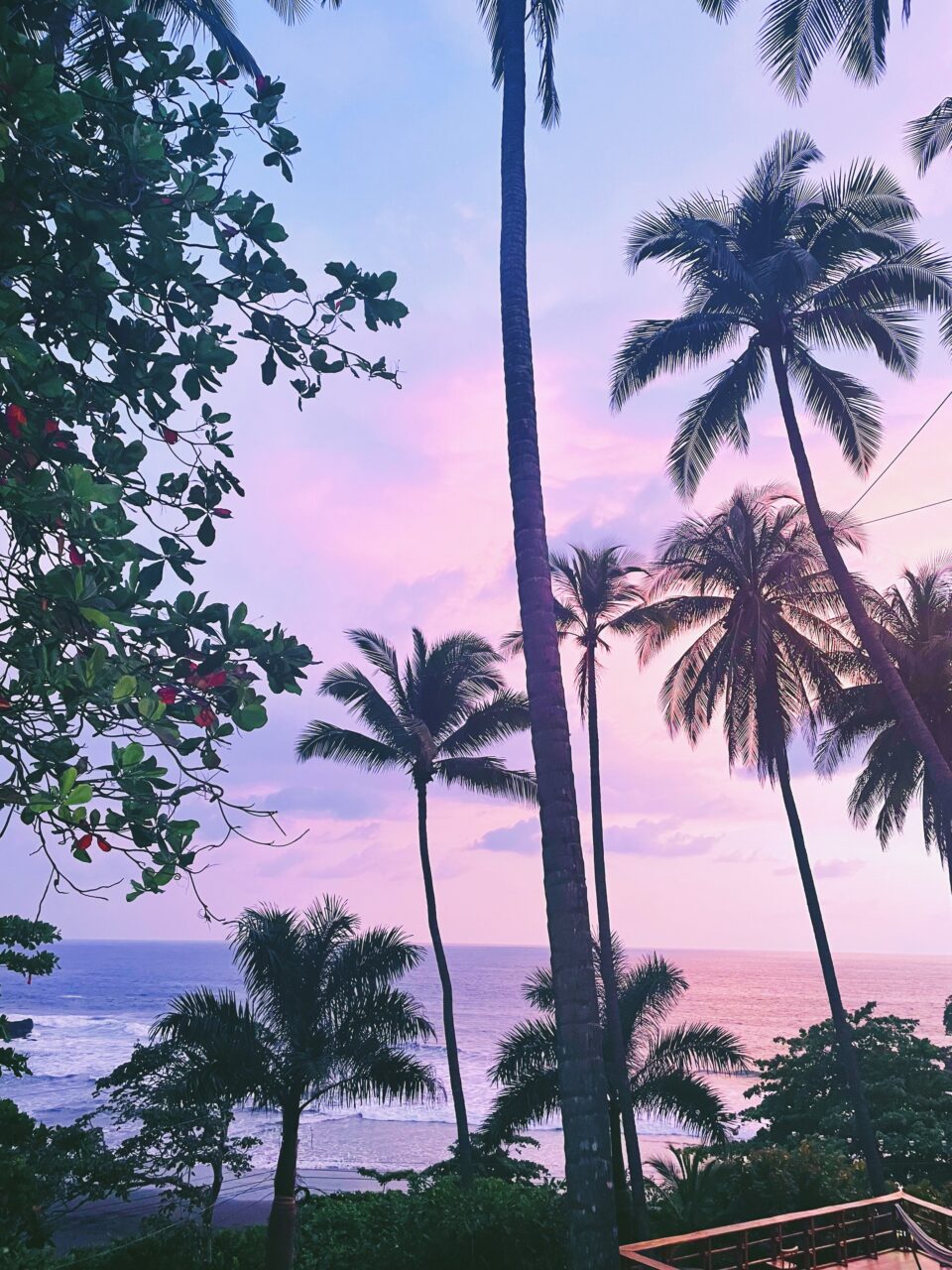With its picturesque limestone cliffs, fresh seafood, and turquoise waters, the Algarve region in Portugal, is perfect for beach holiday lovers, as there are over 100 beaches to explore. Located, in Portugal’s most southern region, the Algarve is only a few hours away from Lisbon. I spent 9 adventurous days living out my bucket list dreams exploring Faro and Lagos.
Here’s the ultimate guide to visiting the Algarve:
Which part of the Algarve is the best?
While we were creating our Algarve itinerary, we had to make the tough decision on which of the stunning cities to visit. Upon researching which areas were the best to visit in Algarve for first-time visitors, it was clear that Faro and Lagos were great cities because they offer easy access to most of the top landmarks and beautiful beaches.
This itinerary focuses on Faro and Lagos and respective day trips from each. However, here’s an overview of the vibes of some of the larger Algarve municipalities:
Albufeira: Algarve’s #1 party destination.
Aljezur: Popular base for surfers.
Faro: Algarve’s capital and largest city. Good for travelers interested in Portugal’s culture and history.
Lagos: One of the largest towns in Western Algarve. Home to some of the most iconic Algarve attractions.
Olhão: Fishing town and home to one of the most important markets in Algarve. A great hub to take a boat to some of the most beautiful islands in the region.
Portimão: Big town that attracts a lot of tourists and has lively nightlife.
Silves: Important city in the Middle Ages. A lot of historic attractions in this area.
Tavira: Known as one of the prettiest cities in the Algarve. Tavira is a historic town filled with culture.
Vilamoura: Upscale city that is known for its luxury resorts, golf courses, and fabulous marina.
Vila Real de Santo António: Borders Spain and attracts a lot of Spanish tourists. Has a different feel from other Algarve cities because the layout of the streets is a grid plan.
When is the best time to go to Algarve Portugal?
The Algarve receives the most visitors during the summer months. If you want to experience the lovely beaches without the massive crowds, it’s recommended that you visit between late April and early June or mid-September to late October. I traveled to the Algarve in late November and the streets were empty (which I loved). To my surprise, there were actually a lot of people in the water. It’s worth noting that the water on the Portuguese coast is not warm, and temperatures may still feel chilly in early summer. If ideal water temperatures are a big deal for you, traveling to the Algarve in July to September when the water is the warmest may be the best for you.

How to get to the Algarve?
There are several ways to travel to the Algarve:
The most convenient, but most costly option is to fly into Faro Airport, the only airport in the Algarve region.
You can also fly into Lisbon Airport, and take a train to Faro (3.5hrs), rent a car and drive to Faro (2hrs 40 min), or take a bus to Faro (3hrs 35 min). I opted for the train which was a direct and comfortable route.
Pro-Tip: I highly recommend avoiding flights to Lisbon with a layover in Paris’ Charles de Gaulle airport. Parisian airport workers are well known for protesting for their rights and striking causing huge travel delays. I arrived in Faro much later than anticipated because of the strikes.
Faro
What is the best area to stay in Faro?
- Cidade Velha: Stay here if you want to be in the heart of the historical center.
- Marina de Faro: Stay here if you want to be close to the water.
- Downtown: Stay here if you want to be close to the majority of restaurants, cafes, and pastry shops. We stood here and enjoyed being within walking distance of everything we needed.
- Montenegro and Quinta do Eucalipto: Stay here if you want to experience suburban living.

What to do in Faro?
We spent 2 days exploring Faro and felt content. Here’s some inspiration for your Faro Itinerary:
Walk around the (Cidade Velha) Old Town
Lined with charming cobblestone streets, historical buildings, museums, Roman passages, classical churches, tiled homes, and cozy cafes, Faro’s Old Town is worth wandering around aimlessly. Here are important landmarks to make note of during your walk:
Faro Cathedral
The Faro Cathedral is the epitome of resilience as it has been through a lot! Despite being burned down by the Earl of Essex in 1596, and damaged by two earthquakes, it still has the original tower with the main doorway and two chapels. The Faro Cathedral is open from Monday to Saturday and costs 3.50 euros.
Arco da Vila
The Arco da Villa is a Portuguese National monument. Built in 1812 by Italian architect Francisco Xavier Fabri, this monument is revered as one of the best examples of Italian neoclassical style in Portugal.

Igreja do Carmo (Carmo Church)
The Carmo Church is famed for its extraordinary Bone Chapel. The Bone Chapel features the bones and skulls of over 1000 monks displayed in geometric patterns.
Muralhas de Faro (Faro City Walls)
Faro’s ancient city walls form a ring around the Old Town. The walls were originally built by the Romans almost 2,000 years ago to protect important buildings.
Ria Formosa Natural Park
While the Algarve is known for its stunning beaches, the region offers other outdoor activities. The Ria Formosa Natural Park is a wetland recognized as one of 7 Wonders of Nature of Portugal. Go on a Ria Formosa Natural Park cruise and explore the maze of canals, freshwater lagoons, marshes, and barrier islands stretching 60km along the Algarve Coast. Bird watching is a popular activity at the Ria Formosa as there are hundreds of native birds in the area.
Ilha do Farol, Culatra or Deserta
Some of the best beaches in the Algarve are found in Faro. Take a speed boat or ferry to visit Ilha do Farol, Culatra or Deserta. These are natural islands with clean beaches and crystal clear water. We were short on time so we only visited Ilha Deserta and booked our tour with Hop On Hop Off Islands.
Where to eat in Faro?

I didn’t have a bad meal my entire time in the Algarve. Here are some of the restaurants I recommend in Faro:
À do Pinto
Adão
Alameda
Aperitivo
Chalavar
Chelsea Breakfast & Brunch
Da Toppino
Pigs & Cows
Travessa
Vila Adentro
Lagos
How to get to Lagos?
If you’re traveling to Lagos from Faro you can take a train (1hr42), take a bus (2hrs10), or rent a car and drive or Uber (1hr).
If you’re traveling to Lagos from Lisbon, take a train (3hrs52), take a bus (3hrs45 to 4hrs15), or rent a car and drive (2hrs44).
What are the best areas of Lagos?
Lagos Old Town: Stay here if you want easy access to beaches and main attractions.
Lagos Marina: Stay here if you want to be close to water sport activities.
Batata Beach: Stay here if you want a beach town vibe.
Meia Praia: Stay here if you want a family-friendly area.
What are the best things to do in Lagos, Portugal?
Free Walking Tour
When possible, I always like to begin my trips with a walking tour to help me get familiar with a city. We went on a fun and informative 2-hour tour with Brodie’s Walking Tour. Tours are free, but tips are highly encouraged. You can contact Brodie and book your tour via What’s app: +351 9168 02338.

Coastal Cliff Walk to Ponta da Piedade
One of the best ways to soak up the beauty of Algarve beaches is through a coastal cliff walk. A popular coastal walk begins in central Lagos and passes through Praia Dona Ana and Praia do Camilo on the way to the iconic Ponta da Piedade. You can also book a boat tour at the Lagos Marina where you can weave through the different rock structures of Ponta da Piedade.
Day trip to Sagres
A 33-minute drive from Lagos is Sagres, Portugal’s Southern Coast. Here we visited Cape Vincent, the most southwestern point in Europe. We also stopped by Ceramica Paraiso in hopes of buying some ceramic goods, but they were closed.
The relentless Atlantic waves make Sagres a popular surfing spot. Praia da Mareta is one of the most visited beaches in the area.
Pro-tip: We took an Uber to Cape Vincent and asked the driver to wait for us and drive us back. The reception was poor in the area and we weren’t confident that we would have been able to get an Uber back to Lagos in a timely manner.
Speedboat tour of the Benagil Caves
If you’ve seen any postcards of the Algarve, they most likely showcase the Benagil Caves. One way to marvel at these beauties up close is through a speedboat tour. We booked our tour at the Lagos Marina.
Pro-tip: Layer up. It gets really chilly on the speedboat.

Visit Mercado Municipal de Lagos for local delicacies
The Mercado Municipal de Lagos is a market that sells fresh produce, seafood, and other unique local Portuguese delicacies. I bought Peri-Peri sauce and a ceramic plate that also serves as a grater.
Visit the Church of San Sebastian
This is another church in Portugal that has a Chapel of Bones where the walls are lined with skulls and bones.
Check out the Lagos Cultural Centre
The Lagos Cultural Centre is the place to go for performing arts and visual arts. Their events range from jazz and classical music to stand-up comedy and photography exhibitions.
Go on a self-guided street art tour
I was not expecting to see incredible street art in Lagos. There is a bunch of interesting street art all over the city. Go on a self-guided street art tour and marvel at the artwork.
Where to eat in Lagos
Casinha do Petisco
Ala do Castelo
Retiro da Trindade
Cafe Odeon
Quay Lagos
Lagos Camping
Mullens
Traveling to the Algarve during off-season was such a treat! I didn’t realize how much I appreciated the slowness of off-season travel. It allowed me to experience the region’s beauty uninterrupted.
Have you been to the Algarve? What time of year did you visit? Let me know in my comments.
Like it? Pin it!






